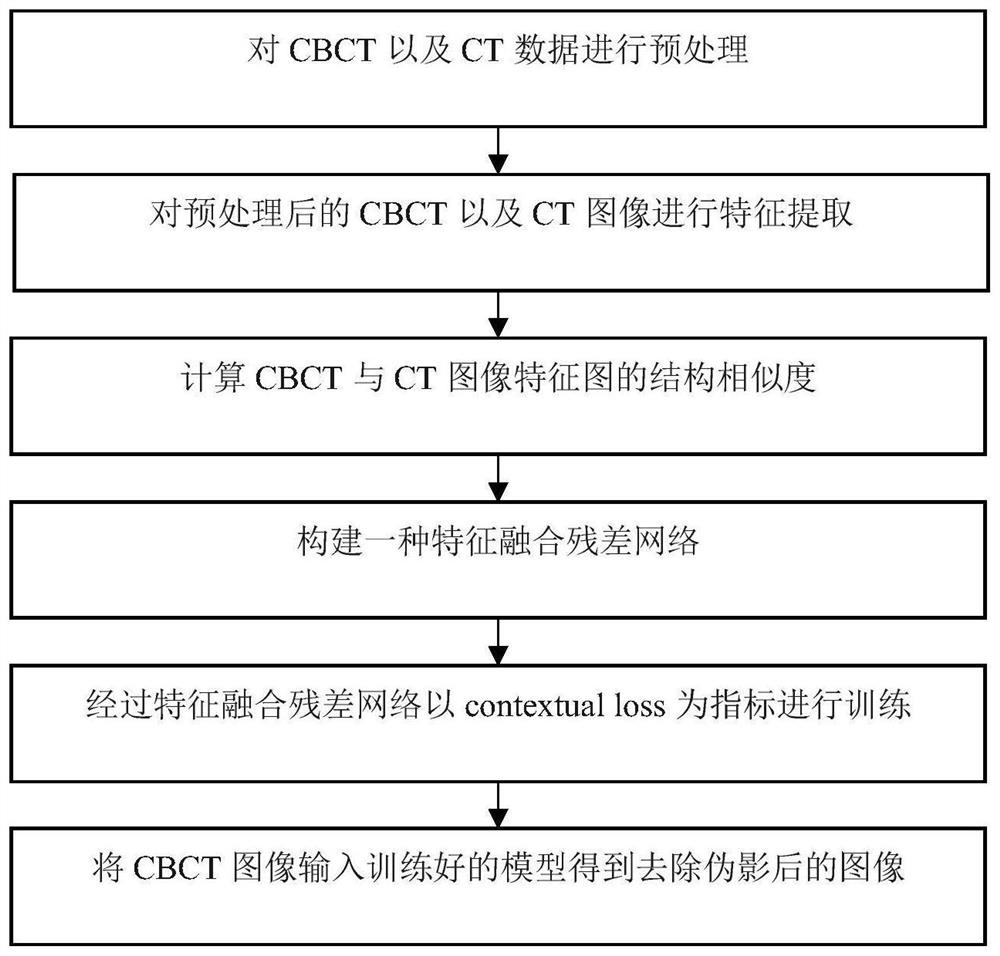CBCT image artifact removing method
A CT image and artifact removal technology, applied in the field of image processing, can solve the problems of noise and artifacts, image quality degradation, low soft tissue contrast, etc., and achieve the effect of not easily deformed, high resolution, and easy to observe
- Summary
- Abstract
- Description
- Claims
- Application Information
AI Technical Summary
Problems solved by technology
Method used
Image
Examples
Embodiment 1
[0052] Such as figure 1 As shown, a CBCT image de-artifact method based on contextual loss and feature fusion residual network disclosed in this embodiment specifically includes the following steps:
[0053] Step (1) preprocesses each image in the CBCT and CT datasets so that each image has the same size and is a suitable input format for the network. Specifically include the following sub-steps:
[0054] (1.1) The CBCT and CT data (.dcm format) obtained from the hospital are intercepted to the same size, the pixel size is m*n, m and n are the length and height of the image respectively, and m=n=512 is taken in the experiment;
[0055] (1.2) Convert the resized .dcm data into .raw format data suitable for the network.
[0056] The data used in this example comes from a hospital, and then we make data sets for different parts, including chest, head and pelvis. In practice, it can also be adapted to other parts. Preprocess these data, intercept each image to 512*512 pixels, ...
PUM
 Login to View More
Login to View More Abstract
Description
Claims
Application Information
 Login to View More
Login to View More - R&D
- Intellectual Property
- Life Sciences
- Materials
- Tech Scout
- Unparalleled Data Quality
- Higher Quality Content
- 60% Fewer Hallucinations
Browse by: Latest US Patents, China's latest patents, Technical Efficacy Thesaurus, Application Domain, Technology Topic, Popular Technical Reports.
© 2025 PatSnap. All rights reserved.Legal|Privacy policy|Modern Slavery Act Transparency Statement|Sitemap|About US| Contact US: help@patsnap.com



